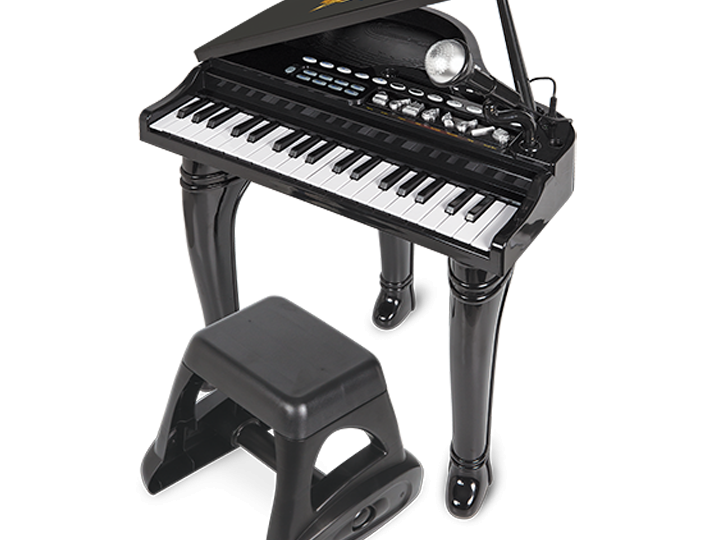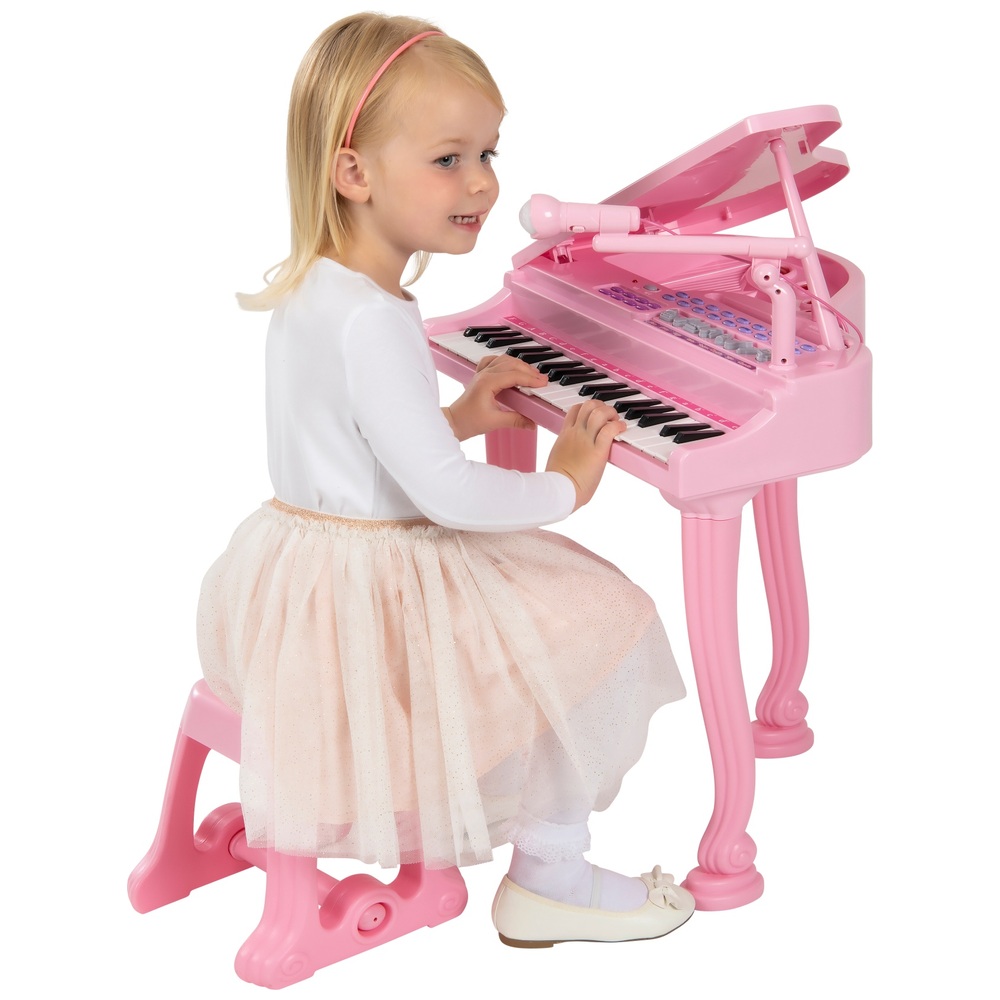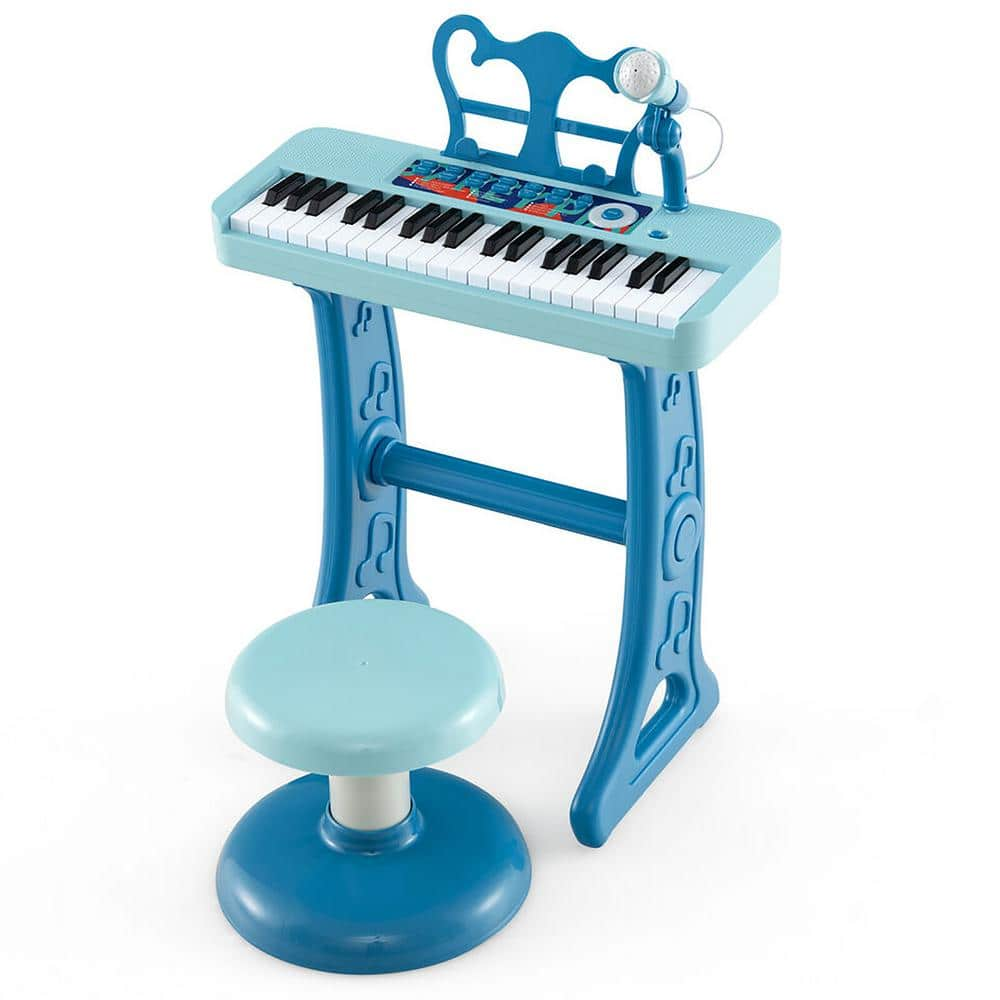
Piano Toys: Inspiring Young Virtuosos in Harmonic Play
Introduction
Piano toys hold a special allure for children, offering a gateway to the enchanting world of music and the joys of creative expression. This comprehensive blog article delves into the captivating realm of piano toys, exploring their varied types, educational significance, cognitive benefits, and the enduring appeal that ignites a spark of musical inspiration in budding young talents. From miniature keyboards to elegantly crafted toy pianos, our exploration seeks to celebrate the transformative power of music, fostering a love for the harmonious art form in children and inspiring the virtuosos of tomorrow.
Part 1: The Melodic World of Toy Piano Keyboards
Level 1: Introduction to Musical Basics
Toy piano keyboards provide an introduction to musical basics, enabling children to learn about notes, scales, and rhythm through playful interaction. These miniature keyboards serve as educational tools that equip young learners with a foundational understanding of music theory and keyboard techniques, nurturing a sense of appreciation for the harmonic elements of music.
Level 2: Encouraging Creative Exploration and Musical Discovery
By offering a platform for creative exploration, toy piano keyboards empower children to embark on a journey of musical discovery, honing their abilities to experiment with sound and composition. Through engaging with various melodies, tones, and rhythmic patterns, children immerse themselves in the joy of musical expression, fostering a sense of versatility and imagination in their play.
Part 2: Precision and Elegance in Toy Grand Pianos
Level 1: Exquisite Design and Aesthetic Appeal
Toy grand pianos exhibit exquisite design and aesthetic appeal, providing children with a miniature yet elegant rendition of the iconic instrument. These meticulously crafted replicas are not just toys; they serve as captivating ornaments that inspire a sense of elegance and artistry, fostering an appreciation for the visual splendor of the grand piano within a smaller, child-friendly scale.
Level 2: Cultivating Aural Sensitivity and Tonal Appreciation
In addition to their visual appeal, toy grand pianos stimulate aural sensitivity and tonal appreciation, as children engage in playing and listening to the nuanced sounds produced by the instrument. Through delicate key touch and attentive ear, young pianists develop an understanding of tonal variation and the harmonic depth of music, cultivating a refined receptiveness to the auditory nuances of piano playing.
Part 3: The Pedagogical Significance of Electronic Piano Keyboards
Level 1: Versatility in Sound and Technological Innovation
Electronic piano keyboards offer versatility in sound and technological innovation, presenting children with a wide array of instrumental tones, rhythms, and interactive features that enhance their learning experience. Through the integration of modern technology, these keyboards harness the power of digital sound production and musical arrangement, expanding the creative possibilities for young musicians.
Level 2: Enabling Comprehensive Music Education
As a pedagogical tool, electronic piano keyboards enable comprehensive music education by offering a diverse range of learning resources, such as built-in lessons, play-along tracks, and interactive tutorials. These keyboards facilitate a holistic approach to musical instruction, guiding children through the fundamentals of music theory, performance techniques, and music composition in an engaging and enriching manner.
Part 4: Imaginative Play with Multi-Functional Piano Activity Centers
Level 1: Interactive Elements and Cognitive Stimulation
Multi-functional piano activity centers incorporate interactive elements that provide cognitive stimulation and multi-sensory engagement, fostering a holistic approach to early childhood development. Through the combination of music, lights, shapes, and tactile features, these activity centers immerse children in a lively and vibrant play environment that nurtures creativity, fine motor skills, and cognitive dexterity.
Level 2: Fostering Musical Curiosity and Kinesthetic Learning
By inviting children to explore various buttons, keys, and tactile components, multi-functional piano activity centers foster a sense of musical curiosity and kinesthetic learning. Young learners embrace the joy of tactile exploration, sensory discovery, and imaginative role-playing, all of which contribute to their evolving understanding and appreciation of music as an integral aspect of their formative experiences.
Part 5: The Inspiring Role of Toy Pianos in Early Music Education
Level 1: Introduction to Rhythmic Coordination and Musical Structure
Toy pianos play an inspiring role in early music education by providing children with an introduction to rhythmic coordination and musical structure. Through hands-on engagement with keys and notes, children develop a fundamental understanding of musical rhythm, coordination, and the structural organization of basic melodies, fostering a foundation for their musical journey.
Level 2: Kindling a Passion for Musical Expression and Performance
With each playful note, toy pianos kindle a passion for musical expression and performance, encouraging children to embrace the joy of sharing their musical creations. These instruments serve as catalysts for young musicians, nurturing their confidence, creativity, and the desire to share their artistry with others through delightful, spontaneous performances that reflect their burgeoning love for music.
Part 6: Nurturing Artistic Sensibilities with Toy Piano Books
Level 1: Musical Literacy and Notation Comprehension
Toy piano books enhance children’s musical literacy by introducing them to notation comprehension, rhythm awareness, and the basics of reading music. Through engaging with simplified sheet music and instructional content, children develop a foundational understanding of music notation, fostering a sense of musical structure and the ability to interpret musical symbols, notes, and rhythms.
Level 2: Cultivating a Love for Repertoire Expansion and Song Interpretation
As children explore a range of musical pieces and exercises in toy piano books, they cultivate a love for repertoire expansion and personalized song interpretation. By engaging with diverse musical compositions and exploring their interpretations, children foster a sense of artistic expression, musical creativity, and a growing appreciation for the cultural significance of different musical genres and styles.
Part 7: Musical Adventure with Portable Toy Keyboards
Level 1: Portability and Musical Accessibility
Portable toy keyboards provide musical accessibility and portability, allowing children to engage in a harmonious adventure wherever they go. These compact and versatile instruments enrich children’s lives with the harmonious joy of music, enabling them to carry their musical aspirations with them, whether at home, during travel, or at playdates with friends.
Level 2: Fostering Exploratory Play and Imaginative Performances
Through portable toy keyboards, children engage in exploratory play and imaginative performances, as they compose melodies, experiment with sounds, and craft musical narratives in various settings. These keyboards serve as companions that foster musical whimsy and inspire youthful virtuosos to pursue their love for creating and performing music at every opportunity.
Part 8: The Cognitively Enriching Role of Wooden Toy Pianos
Level 1: Aesthetically Pleasing Design and Durable Craftsmanship
Wooden toy pianos are characterized by their aesthetically pleasing design and durable craftsmanship, offering children captivating instruments that showcase the timeless elegance and artisanal quality of wooden construction. These instruments serve as enduring symbols of artistic beauty and tactile sensory pleasure, inviting engagement through their exquisite appearance and sturdy, tactile composition.
Level 2: Enhancing Auditory Discrimination and Fine Motor Skills
Engaging with wooden toy pianos enhances children’s auditory discrimination and fine motor skills, as they sensitively touch, press, and listen to the resonant tones produced by the instrument. The act of playing the piano strengthens their auditory perception, nurturing an appreciation for tonal variations and harmonies, as well as their ability to develop fine motor skills and hand-eye coordination with precision and grace.
Conclusion
Piano toys serve as cultural touchstones that spark the imagination, inspire creativity, and instill a lifelong love for music in children. Through their accessible and engaging nature, these toys provide a gateway to musical exploration, cognitive development, and the transformative power of artistic expression. As young virtuosos engage with piano toys, they embark on a harmonious journey that cultivates an enduring appreciation for the beauty, grace, and emotional resonance of music, shaping their experiences and nurturing their musical potential. Whether through playful interaction or the beginning stages of formal music education, piano toys emerge as cherished companions that inspire the virtuosos of tomorrow, fostering a love for the harmonic art form that will illuminate their lives for years to come.


